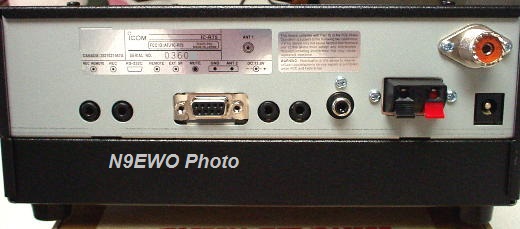

The Icom IC-R8500 is my current primary scanning receiver. The main advantage over the R7000 is 900 more memory channels. Performance for DX is similar to the R7000. This receiver was released around 1992, and came after the R-7000.
#ICOM R8500 REVIEW PROFESSIONAL#
However, it has impressive performance, and is probably the most cost effective professional grade scanning receiver for the VHF DXer.

The R-7000 receiver was first released around 1986. It has been largely replaced by the model 7100, which has similar capabilities except that reception of the 800 - 900 MHz cellular telephone band has been left out. It contains AM, NBFM, WBFM, USB and LSB detectors. The ICOM model 7000 receiver, which is no longer available new, is an all-mode, synthesized VHF and UHF receiver tuning 25 to 2000 MHz. This is listed on page 35 of the R8500 owners manual.
#ICOM R8500 REVIEW MANUAL#
The R8500 instruction manual also includes detail of a command code to toggle the AGC on and off. See: Disabling AGC in the ICOM Microwave Receivers: OneĬould easily mount a on/off switch at the back of the set for bypassing theĪGC. It is possible to switch off theĪGC by simply cutting a single wire on the R8500 main circuit board. However, the only drawback for radio astronomy is that the This is perhaps because the sensitivity and noise floor on the R8500 is superior to the R7000 and R7100. They do state that the R8500 is the best receiverĪvailable for their SETI experiments. Most amateur radio astronomy pages recommend the Icom R7000, R7100, or R8500.
#ICOM R8500 REVIEW PC#
Some DX TV operators have employed narrow band receiving systems for detection of signals that would otherwise go unnoticed.Īll of the receivers described on this page, feature AM, NBFM, WBFM, USB and LSB detectors, with an audio output suitable for connecting to the sound card line input for driving most PC frequency spectrum analyzer programs.įor monitoring extremely weak AM video carriers, a 20 Hz tunable audio bandpass filter is used by the author. To improve the S/N (signal to noise ratio), narrow bandpass audio filters are used to detect moon bounce signals. These signal levels are typically only a fraction of a microvolt. For example:ĮME and radio astronomy applications for the Icom R-8500ĮME (earth-moon-earth) VHF DX hams chase extremely weak CW signals. For example, memory channels are usually as follows:ĭepending on what channels are received, the audio frequency can also be programmed into memory. For example, US TV DXers would program all video and audio channels for channels A2-A13.įor optimum reception, tune approximately 1 KHz below the AM video carrier. To facilitate programming of scanner memory channels, obtain an allocation table for all television video and audio frequencies. Narrow 15 KHz and wide 100 KHz FM modes are used for monitoring TV audio. USB mode 2.4 KHz bandwidth is used to detect weak AM video carriers. Scanner receivers will detect the presence of extremely weak TV signals - typically down to ~ 0.1uV - long before they are strong enough to produce images on a TV screen.Īpproximately 60 memory channels, including 50-52 MHz 6 meter beacons, and 45-108 MHz TV video and sound carriers are programmed into my Icom R-7000 and R-8500 scanners. I initially check the memory channels on the Icom scanners for signs of DX TV signals before switching on a TV set. In fact, I now consider scanning receivers the most important part of my VHF/UHF DX receiving system. Although they are among the most expensive range of wide-band scanners available, their outstanding performance is well worth the investment.Īfter I purchased my first AOR-AR3000 VHF/UHF scanning receiver back in 1991, VHF DX reception considerably increased. This article features synthesized scanning receivers that are recommended for effective monitoring of VHF/UHF television and FM radio DX signals.


 0 kommentar(er)
0 kommentar(er)
